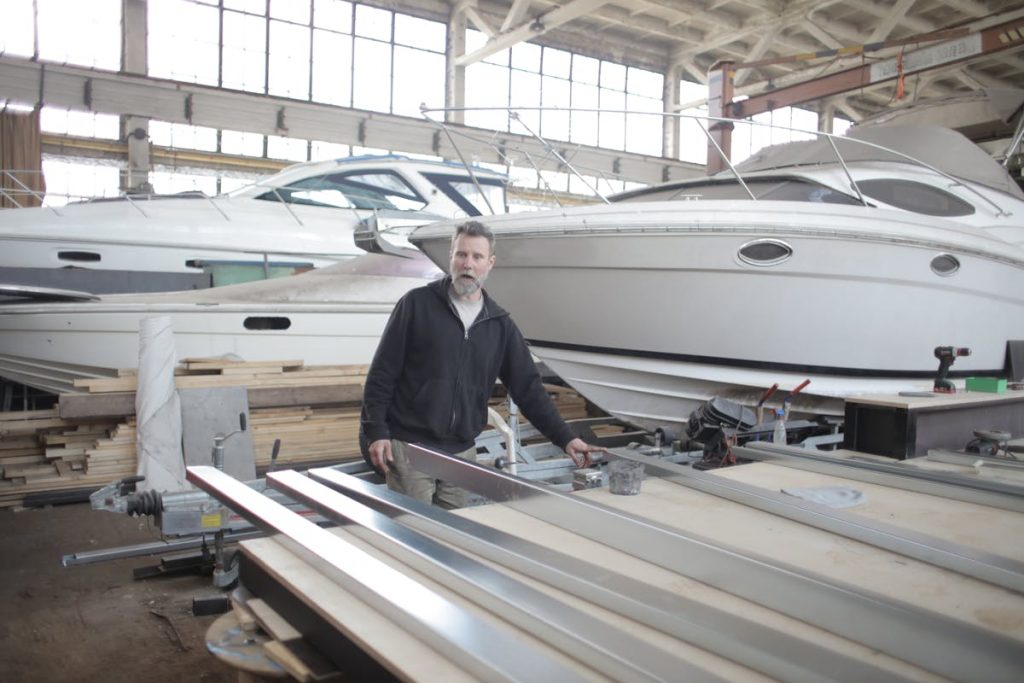
- Regular maintenance during the off-season can prevent minor issues from becoming bigger problems when you’re ready to use your boat again.
- Use a fuel stabilizer if your boat sits idle for an extended period to prevent potential engine damage.
- Take care of your boat’s battery by either removing it and storing it indoors or using a trickle charger to keep it charged.
- It’s important to periodically check on your boat during the off-season, especially after extreme weather conditions.
Safeguarding your prized watercraft continues after the last summer day on the lake. The off-season is when boats require the most attention to ensure they shine just as brilliantly when the next season beckons. Whether you own a kayak, a bass boat, or an opulent yacht, transitioning from active use to hibernation is critical for your vessel’s longevity.
This comprehensive guide will explore essential steps every boat owner should take to prepare for the off-season. From choosing the right storage facility to meticulous interior protection, we’ve covered you with the details you need to protect your watercraft investment.
The Importance of Off-Season Care for Watercraft
Your boat is not just a toy—it’s a financial investment, a platform for memories, and, in many cases, a critical part of leisure and work. Off-season care is paramount for several reasons, the most vital being preventing damage and reducing long-term maintenance costs. The simple tasks outlined in this post will save you from the potential heartache of returning to a damaged boat.
Beyond that, meticulous off-season preparation helps ensure that your first outing of the new season is hassle-free. Think of it as a health check-up for your boat. Neglecting the off-season care could lead to problems like corrosion, engine damage from neglecting fuel, or even the facilitation of potential theft.
Essential Tips for Off-Season Watercraft Protection
Choosing the Right Boat Storage Facility
Storage is one of the foundational aspects of off-season care for watercraft. Make the wrong choice; it won’t matter how diligent you were with your winterizing procedures. Here are some key considerations when selecting a boat storage facility:
- Indoor vs. Outdoor: Indoor storage is preferable, as it provides protection from the elements and greatly reduces the risk of theft and vandalism. If indoor storage is not possible, choose a covered slip to minimize exposure.
- Facility Security: Get peace of mind by selecting a storage facility with strong security measures, such as surveillance, gated access, and on-site personnel.
- Proximity to Water: The closer your boat is to water, the easier the spring launch will be. This convenience can make the return to the water a much less daunting task.
Thorough Cleaning and Inspection
Before your watercraft goes into storage, spend a day giving it a thorough clean. This task serves two main purposes: it removes any corrosive salt or other chemicals that could eat away at your boat’s surfaces and allows you to inspect for any damage that needs immediate repair. Here’s what you should do:
- Washing: Use a gentle boat soap that won’t strip off the wax, and get into every nook and cranny to remove accumulated grime.
- Waxing: Apply a protective wax to all non-porous surfaces. This protects against UV damage, weakening the gel coat and other materials.
- Inspection: Look for any chips or cracks in the hull, windshield, and other critical structural areas. These should be repaired immediately to prevent them from worsening over the off-season.
Engine and Fuel System Care
Your boat’s engine is perhaps its most vital organ, requiring a precise set of preparatory steps before storage. These include:
- Oil Change: Used and old oil can be corrosive. Change the oil and replace the filter with a new one before storing your boat.
- Fuel Stabilizer: Add a fuel stabilizer to a nearly full gas tank. This will prevent the fuel from breaking down and becoming gummy over the months of inactivity.
- Winterizing: If you’re in a climate that experiences freezing temperatures, be sure to follow your manufacturer’s winterization procedures. This typically involves draining the engine block and manifolds and filling them with antifreeze.
- Battery Maintenance: Remove your boat’s battery and store it in a cool, dry place. A trickle charger can help maintain its charge over the off-season.
Protecting the Interior and Electronics
The inside of your boat can be a moisture trap, and moisture is the enemy of upholstery, wood, and electronic components. To protect the interior:
- Cushions and Upholstery: Remove cushions and store them in a well-ventilated area. This can prevent mold and mildew.
- Electronics: If possible, remove electronics and store them inside your home. If not, consider using a waterproof, breathable cover.
- Moisture Control: Use desiccant bags, moisture-absorbing buckets, or even a small dehumidifier to keep the air inside your boat as dry as possible.
Proper Covering and Security Measures
Boat covers aren’t just for keeping dust off your hull—they can help prevent UV damage, deter pests, and add an extra layer of security. Here’s how to cover your boat properly:
- Fit: A cover that fits snugly is key. Loose covers can flap in the wind, which can cause damage over time.
- Material: Invest in a high-quality cover made of UV-resistant, breathable material. The cover should have vents to prevent moisture buildup.
- Additional Security: Consider using a boat alarm or even just a padlock to secure zippers and tie-downs on your cover. Thieves are less likely to target a boat that requires more effort to access.
Additional Tips
Keeping a watercraft in top shape during the off-season takes some effort, but it’s worth it for a longer lifespan and better performance. Here are a few more tips to keep in mind:
- Regular Maintenance: Don’t neglect regular maintenance, even during the off-season. This can help prevent small issues from turning into bigger problems when you’re ready to return to the water.
- Fuel Stabilization: If your boat is sitting for an extended period, use a fuel stabilizer to prevent ethanol buildup and potential engine damage.
- Battery Maintenance: To avoid a dead battery when it’s time to start up your boat again, either remove it and store it indoors or use a trickle charger to keep it charged.
- Check on Your Boat: Regularly check on your boat during the off-season, especially after major storms or extreme weather conditions. This will allow you to catch and address any issues early on.
The Bottom Line

The care and attention you give your watercraft during the off-season will pay dividends in both the short and long term. It ensures your boat remains in top condition, extending its useable life and maintaining its value. Effective preparation will allow you to hit the water confidently and enthusiastically when the next season arrives. For boat owners, the off-season is not a time to set and forget—it’s a valuable period for proactive maintenance that any worthy vessel deserves. Start your off-season preparations today and experience the joy of a beautifully maintained boat next season.
